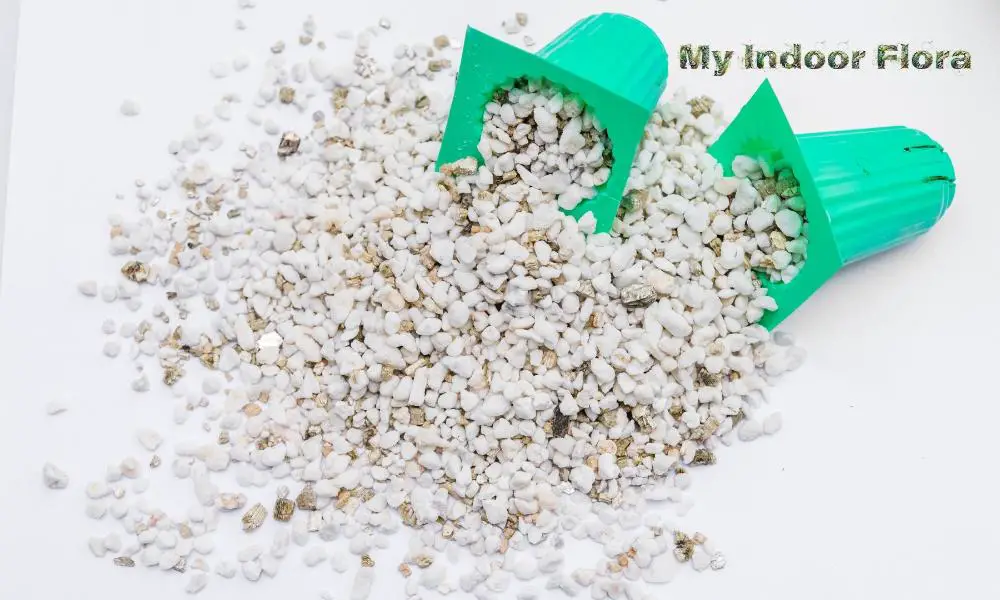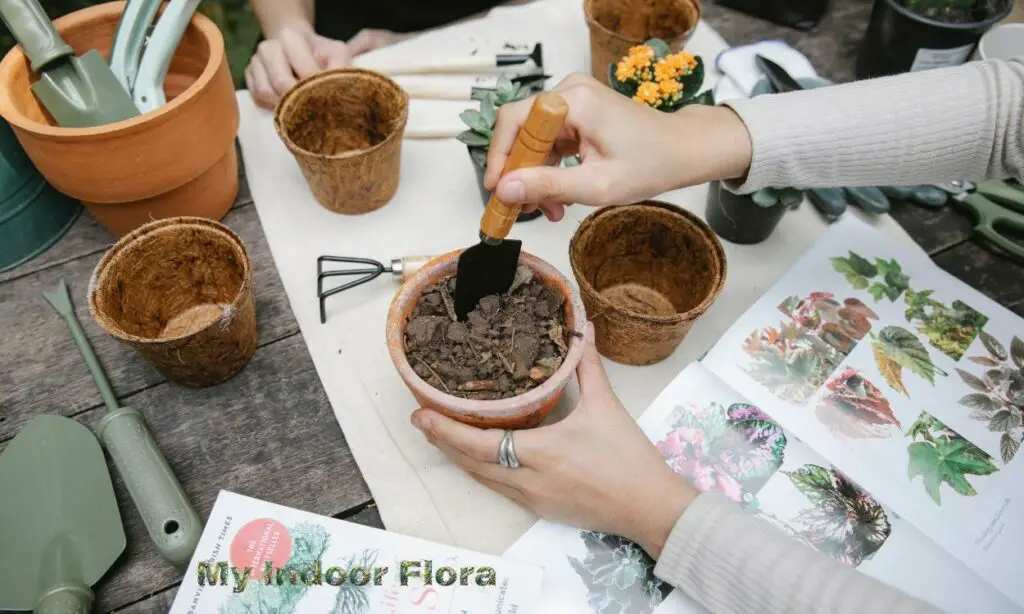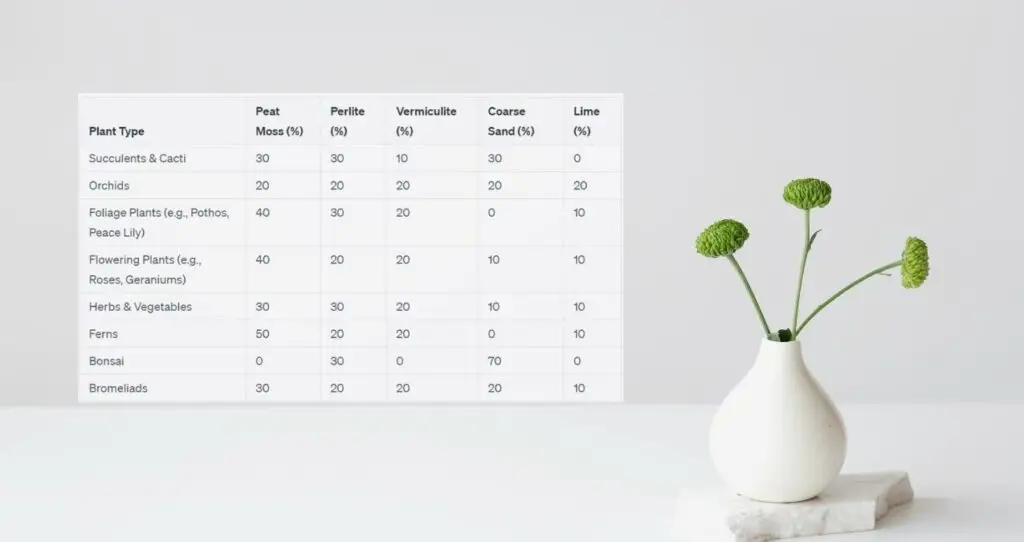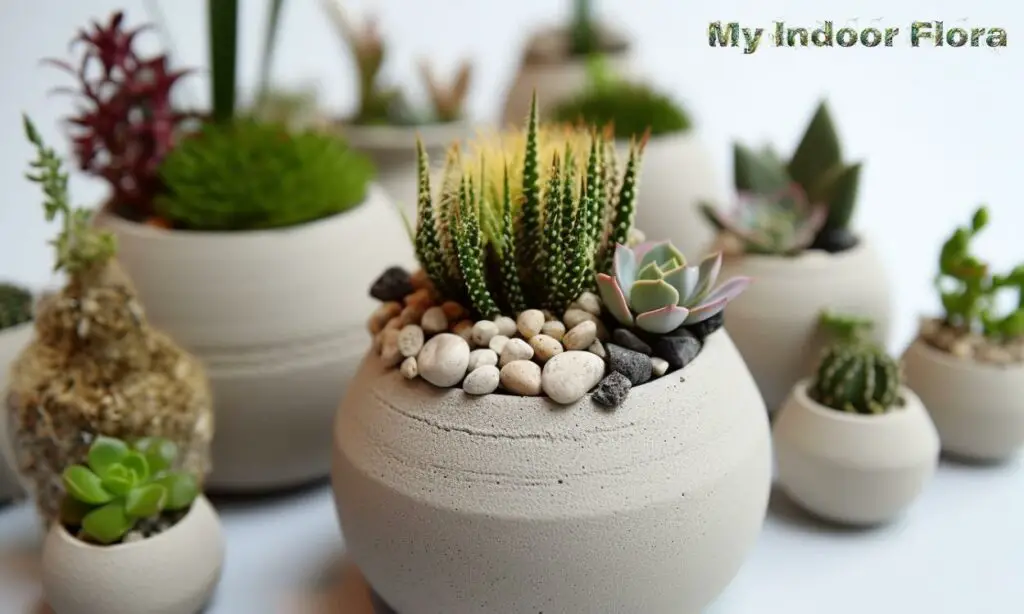Potting mixes are essential for the healthy growth of plants in containers, and their composition can make a significant difference in their success. Among the various components of potting mixes, inorganic materials play a crucial role in providing an optimal environment for plant development. In fact, according to a study published in the Journal of Plant Nutrition and Soil Science, the addition of inorganic components can greatly improve the physical properties of potting mixes, such as drainage, aeration, water and nutrient retention, and pest and disease resistance. This comprehensive guide delves into the importance and benefits of inorganic components in potting mixes, how they affect the physical properties of these mixes, and the optimal ratios for different plants and growing conditions. We also address environmental concerns and sustainable alternatives, empowering you to make informed choices for your gardening endeavors.
What are the Key Inorganic Components in Potting Mixes?
Inorganic components are materials that do not contain carbon and hydrogen compounds. They typically offer benefits such as improved drainage, aeration, and water and nutrient retention. Some of the most widely used inorganic components in potting mixes include perlite, vermiculite, and sand. In the following sections, we’ll explore the origin, properties, and benefits of each component.

1. Perlite
Perlite is a type of volcanic glass formed by the rapid cooling of molten lava. It is known for its light weight, high porosity, and excellent drainage properties.
Origin and properties
When heated to high temperatures, perlite expands, forming small, white, porous particles. These particles can hold up to four times their weight in water and are chemically inert, meaning they won’t react with other substances in the potting mix.
Benefits in potting mixes
Perlite is commonly used in potting mixes to improve aeration and drainage, as its porous nature allows water to flow through easily while providing air spaces for roots to access oxygen. The increased oxygen availability promotes healthy root growth and helps prevent root rot.
2. Vermiculite
Vermiculite is a naturally occurring mineral that expands when heated, forming lightweight, absorbent particles with a high surface area.
Origin and properties
Vermiculite is formed from the weathering of certain mica minerals. When subjected to heat, it undergoes significant expansion, creating thin, accordion-like particles. Vermiculite has a high cation exchange capacity (CEC), which means it can hold and release nutrients effectively, making it an excellent component for potting mixes.
Benefits in potting mixes
In potting mixes, vermiculite helps improve water and nutrient retention, as well as aeration. Its high CEC allows it to store nutrients for later use by plants, and its porous structure creates air pockets that promote root growth.
3. Sand
Sand is another inorganic component commonly found in potting mixes. It is primarily composed of small rock and mineral particles.
Types and properties
There are several types of sand used in potting mixes, including coarse, medium, and fine sand. Coarse sand provides better aeration and drainage, while fine sand tends to retain more water.
Benefits in potting mixes
Incorporating sand into a potting mix improves drainage and helps prevent soil compaction. This is particularly beneficial for plants that require well-draining soil, such as succulents and cacti.
4. Other inorganic components
Apart from perlite, vermiculite, and sand, there are other inorganic components that can be used in potting mixes, such as pumice and expanded clay. These materials offer similar benefits in terms of drainage, aeration, and water retention.
Now that we’ve covered the key inorganic components found in potting mixes, let’s discuss their importance in providing an optimal growing environment for plants.
Why are Inorganic Components Essential in Potting Mixes?
Inorganic components play a crucial role in creating the right balance of physical properties in a potting mix. Their presence contributes to improved drainage, aeration, water and nutrient retention, and pest and disease resistance. Let’s explore these benefits in more detail.
Drainage improvement
Good drainage is vital for preventing root rot and other water-related issues in plants. Inorganic components like perlite, sand, and pumice allow excess water to flow through the mix, ensuring that plant roots don’t sit in standing water for prolonged periods.
Aeration and root growth support
Plant roots require oxygen for respiration and nutrient uptake. Inorganic components create air pockets within the potting mix, providing roots with access to the necessary oxygen. This promotes healthy root growth and helps plants absorb nutrients more efficiently.
Retention of water and nutrients
Some inorganic components, such as vermiculite and expanded clay, can hold water and nutrients, releasing them slowly over time. This ensures a steady supply of water and nutrients to the plant roots, supporting consistent growth and reducing the need for frequent watering or fertilization.
Pest and disease resistance
The presence of inorganic components in potting mixes helps create an unfavorable environment for pests and diseases. For example, well-draining potting mixes reduce the likelihood of root rot and other fungal infections, while the physical structure of some inorganic components can deter pests like fungus gnats.
With an understanding of the importance of inorganic components in potting mixes, let’s move on to how they affect the physical properties of these mixes.

How do Inorganic Components Affect the Physical Properties of Potting Mixes?
The addition of inorganic components can significantly impact the texture, structure, water-holding capacity, air porosity, and bulk density of a potting mix. These properties are crucial for creating an optimal growing environment for plants.
Texture and structure
Inorganic components contribute to the overall texture and structure of a potting mix. For example, coarse sand and perlite create a more open and well-aerated mix, while fine sand and vermiculite can create a denser and more water-retentive mix.
Water-holding capacity
The water-holding capacity of a potting mix is affected by the size and shape of its inorganic components. Vermiculite and expanded clay, with their high surface area and porous structure, can retain more water than perlite or sand.
Air porosity
Air porosity refers to the volume of air spaces in a potting mix. Inorganic components like perlite, pumice, and coarse sand create larger air pockets, promoting better aeration and oxygen availability for plant roots.
Bulk density
The bulk density of a potting mix is influenced by the weight and size of its components. Inorganic components like perlite and vermiculite are lightweight and reduce the overall weight of the mix, making it easier to handle and transport.
Knowing how inorganic components influence the physical properties of potting mixes, let’s learn about the optimal ratios for different plants and growing conditions.
What is the Optimal Ratio of Inorganic Components in Potting Mixes?
The ideal ratio of inorganic components in a potting mix varies depending on factors such as plant species, climate and environmental conditions, and container type and size. In this section, we’ll discuss general guidelines for incorporating inorganic components into potting mixes for different types of plants.

Factors influencing the optimal ratio
- Plant species: Different plants have varying requirements for drainage, aeration, and water and nutrient retention. For example, succulents and cacti need well-draining mixes, while moisture-loving plants may require more water-retentive components.
- Climate and environmental conditions: The local climate and growing conditions play a significant role in determining the optimal ratio of inorganic components. In areas with high rainfall or humidity, a potting mix with better drainage may be required, while in arid regions, a mix with higher water retention capabilities may be more suitable.
- Container type and size: The type and size of the container also influence the optimal ratio of inorganic components. Smaller containers may need a mix that retains water longer to prevent rapid drying out, while larger containers may benefit from a mix with better drainage to avoid waterlogging.
General guidelines for different types of plants
- Succulents and cacti: For these plants, a well-draining mix is essential. A common ratio is 1:1:1 of potting soil, perlite or pumice, and coarse sand. This mix allows for good drainage and aeration, preventing root rot and promoting healthy growth.
- Flowering and foliage plants: These plants typically require a balanced mix that provides adequate drainage and water retention. A recommended ratio is 2:1:1 of potting soil, perlite or vermiculite, and coarse sand. This mix offers a balance of aeration, drainage, and water retention, supporting consistent growth and flowering.
- Trees and shrubs: For trees and shrubs, a more stable and nutrient-rich mix may be needed. A possible ratio is 3:1:1 of potting soil, perlite or vermiculite, and compost or well-rotted manure. This mix provides a combination of drainage, aeration, and nutrient availability suitable for larger, long-term plantings.
Armed with this knowledge, let’s discuss how to select the right inorganic components for your potting mix.
How to Select the Right Inorganic Components for Your Potting Mix?
To select the appropriate inorganic components for your potting mix, consider the needs of your plants, the available resources, and the quality of the components. Here are some steps to guide you through the process:
- Assessing the needs of your plants: Determine the specific requirements of your plants in terms of drainage, aeration, and water and nutrient retention. This information will help you select the most suitable inorganic components for your mix.
- Considering the available resources: Evaluate the inorganic components that are locally available and affordable. This will help you make an environmentally friendly and cost-effective choice.
- Evaluating the quality of inorganic components: Ensure that the inorganic components you choose are of high quality and free from contaminants. This is especially important when using sand, as it may contain salts or other impurities that can harm your plants.
- Mixing and adjusting ratios: Once you have selected the appropriate inorganic components, start by mixing them in the recommended ratios for your specific plants. You may need to adjust the ratios based on your growing conditions or the specific needs of your plants.

Are there any Environmental Concerns Related to the Use of Inorganic Components in Potting Mixes?
The extraction, production, and use of inorganic components in potting mixes can have environmental implications, such as sustainability of resource extraction, energy consumption, and possible pollution risks. Here, we’ll discuss these concerns and suggest some eco-friendly alternatives.
- Sustainability of resource extraction: The mining of some inorganic components, like vermiculite, may raise sustainability concerns. It is crucial to choose materials from responsible sources that follow environmentally sound extraction practices.
- Energy consumption during production: The production of some inorganic components, like perlite, requires high energy inputs due to the heating process involved in their expansion. When selecting inorganic components, consider the energy footprint of their production and opt for materials with lower energy requirements when possible.
- Pollution risks: Some inorganic components, such as sand, can contain impurities like salts or heavy metals that may pose risks to plants and the environment. Ensure you use clean, high-quality materials in your potting mixes to minimize potential pollution issues.
Eco-friendly alternatives
To mitigate the environmental concerns associated with the use of inorganic components in potting mixes, consider the following eco-friendly alternatives:
- Recycled materials: Some inorganic components can be sourced from recycled materials, reducing their environmental impact. For example, crushed brick, glass, or ceramics can be used as alternatives to sand, while recycled expanded polystyrene can replace perlite in some applications.
- Natural, local materials: Utilizing locally available, natural materials like crushed lava rock, coconut coir, or rice hulls can reduce the environmental footprint of your potting mix while providing similar benefits to traditional inorganic components.
- Sustainable sourcing: If you choose to use traditional inorganic components like perlite or vermiculite, ensure they are sourced from responsible suppliers that adhere to sustainable extraction and production practices.
Conclusion
Inorganic components in potting mixes play a vital role in providing plants with the right balance of drainage, aeration, and water and nutrient retention. Understanding the properties and benefits of these components, as well as the optimal ratios for different plants, is key to creating a successful potting mix. By selecting high-quality, environmentally friendly materials, you can minimize the environmental impact of your potting mixes while promoting healthy plant growth. Happy gardening!
